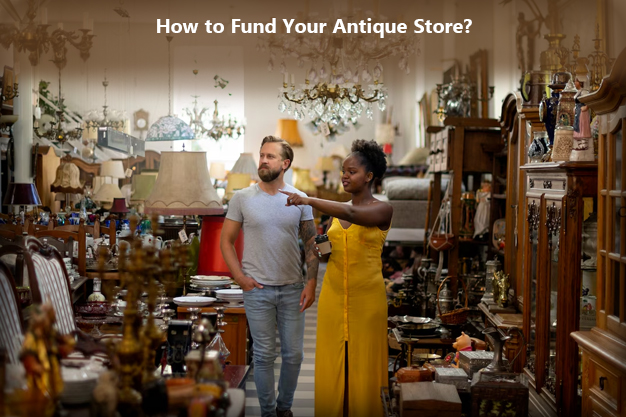
Starting and growing an antique store is a passion project for many. The charm of vintage finds and the stories they carry can captivate customers. Turning your store into a beloved local treasure. But, turning your love for antiques into a thriving business requires more than a keen eye for valuable pieces; it requires funding. Here’s how to secure your antique store business loan off the ground and keep it growing.
Understanding the Costs of Running an Antique Store Business
Before diving into funding options, it’s important to understand the costs associated with running an antique store. These can include:
- Initial Inventory: Acquiring a diverse and appealing stock of antiques.
- Store Lease: Renting a suitable space in a good location.
- Store Setup: Shelving, lighting, security, and decoration.
- Marketing: Advertising, website development, and social media management.
- Operational Costs: Utilities, staff salaries, insurance, and maintenance.
Knowing these costs will help you determine how much funding you need.
What are Small Business Loans?
Small business loans are funds provided by banks and other lenders to help small businesses grow. You can use these loans to buy inventory, set up a store, cover initial operating costs, or expand your business. They come with specific terms and conditions, including interest rates and repayment schedules. To qualify for a small business loan, borrowers usually need to provide a detailed business plan that demonstrates the potential for success.
To apply for a small business loan, you need to understand the lending process. This means preparing financial statements, business projections, and a plan for how you’ll use the loan to grow. Lenders look at your credit history, and financial health before approving the loan. Getting a small business loan can give you the money needed to achieve your business goals.
Types of Small Business Loans
- Term Loans: These are lump-sum loans with a fixed repayment schedule. They are ideal for significant one-time expenses like inventory purchases or store renovations.
- SBA Loans: Loans backed by the Small Business Administration (SBA) offer lower interest rates. With longer repayment terms but can be more challenging to qualify for.
- Microloans: Smaller loans offered by non-profit organizations. Often with more lenient qualification criteria, making them suitable for new businesses.
Merchant Cash Advances
A merchant cash advance gives you a lump sum of money in exchange for a percentage of your future sales. This can be a good option if your antique store already has some revenue but needs quick capital for growth. Keep in mind that merchant cash advances often come with higher costs compared to traditional loans.
Online Lenders
Online lenders like Business Capital USA offer quick and accessible funding options for small businesses. These lenders often have more lenient qualification criteria and faster approval times. Making them a good option for new antique stores needing immediate funds.
Eligibility for Getting an Antique Store Business Loan
Eligibility criteria for antique store business loans can vary depending on the lender. Some common eligibility requirements may include:
- 1 year in business
- Monthly revenue of $15,000
- Business owner must posses Social Security Number (SSN)
- Valid Business Tax ID / EIN
- 3 months of bank statements available
Meeting these eligibility requirements can improve your chances of qualifying for an antique store business loan. It’s important to review each lender’s requirements before applying to ensure that you meet the criteria.
Funding an antique store involves careful planning and exploring many financial avenues. Small business loans are the best solutions for your business’s growth. By understanding your costs and creating a solid business plan, you can find the right funding mix to turn your passion for antiques into a successful business. With the right financial support, your antique store can achieve great heights. Offering vintage treasures to customers for years to come.
